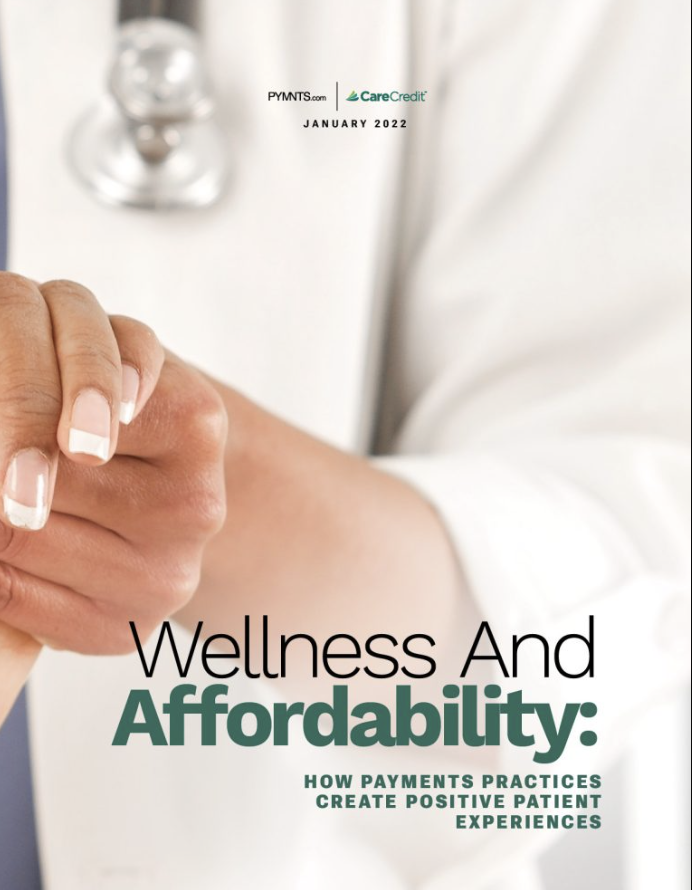Retaining Patients: Successful Tech Needed in New Era of Pricing and Payments
"Patient as consumer" is by no means a new concept; however, it seems that a great many health systems are having a hard time grasping the concept in terms of engagement, according to a discussion posted on PYMNTS.com.
“Health systems will tell you they’ve been financing patients for a long time,” CareCredit Senior Vice President and General Manager of Health Systems Shannon Burke told PYMNTS. “What we haven’t been good at is letting patients know about financing and giving them broader options, like they see in other parts of their lives.”
Burke joked, “You don’t just throw a bunch of groceries in a cart and have no idea [of the costs] until you get to the register. You want to know what costs are. You want options to pay those costs if you don’t have the means to do it immediately.”
Patients Opting Out of Treatments...
A PYMNTS report entitled “Wellness And Affordability: How Payments Practices Create Positive Patient Experiences,” found that:
- 33% of consumers have opted out of medical interventions
- 12% cited cost as the most important reason why
- 22% said they opted out of needed medical treatment because they could not afford the treatment
The fact that medical costs have shifted from employers and health plans to consumers isn’t working that well for anyone, particularly the patient.

Burke said that at one time, “We just consumed care. We evolved over time into payers because of the nature of how healthcare was financed and paid for. The latest thing that is coming to light is that we have become customers.”
Embedding payment options along the healthcare journey, from scheduling through post-care, is how forward-thinking operators are dealing with fundamental changes in health payments.
“The new wrinkle is the health systems acknowledging that one size is not going to fit all,” she said. “You and I probably have different expectations when we receive a bill. That’s really what it is, meeting the demand and flexibility and choice of the customer.”
And there is, of course. the "upward spiral" of costs that occur when a health condition is not "nipped in the bud":
“Costs go up when we delay care. Things don’t tend to resolve themselves in most cases,” she said. “What we’re doing as part of financing is making sure we enable patients with a means and the comfort and confidence [of] knowing what the costs are.”
Price Transparency Forcing Healthcare to Focus on RCM
One positive result of the pandemic is that it has forced healthcare providers to emphasize price transparency and include -- up front -- payment options in their conversations about care.
As The Wellness and Affordability study found, the difficulty involved in obtaining costs before a visit or treatment is an important reason that 38% of respondents would switch healthcare providers. Additionally, 36% said they would switch providers based on their practitioner’s billing process being difficult to track or understand.

“There was a time we had one doctor — we started with that doctor probably with our family, that was the only doctor we knew and that’s the doctor we went to, and we never thought any differently,” Burke said. “The study certainly shows that when we don’t get the experience we want and when we don’t get the customer service we want, we will walk.”
To accomplish and maintain this new level of price transparency -- and engage the new "medical consumer" -- requires healthcare to take a closer look at revenue cycle management. In order to get a full scope of the patient billing landscape, RCM needs to achieve full healthcare data interoperability.
To achieve this, PDF and paper-based EOBs need to be converted into data -- and this requires the adoption of artificial intelligence and deep learning technologies to electronify these payments. As noted in the 2021 CAQH Index, 36% of payments still remain partially or fully manual, and without electronifying these payments into data that can be utilized for downstream BI systems, it will be almost impossible to create accurate, predictable pricing that will not only achieve revenue goals for the healthcare provider, but also avoid being cost prohibitive to patients.
